-

-
We are specialists for your holidays in La Palma. With personalized assistance on-site.

Ulrich & Evelyn Roth -
Our service numbers
Write e-mail+34 822 68 00 89
+49 7442 819 85 90
We're available from Monday to Friday from 10:00 a.m. to 6:00 p.m., and Saturdays from 10:00 a.m. to 1:00 p.m.
-
Accommodations
- with pool 90
- on the seaside 48
- with internet 208
-
Northwest >>
130
- Aguatavar 7
- Arecida 6
- El Castillo 1
- Garafía 4
- Las Tricias 7
- Puntagorda 42
- Tijarafe 22
- Tijarafe Costa 6
- Tijarafe El Jesús 12
- Tijarafe La Punta 21
- Tinizara 2
-
Aridane Valley >>
224
- Celta 7
- Charco Verde 3
- El Paso 22
- Hermosilla 1
- La Bombilla 2
- La Laguna 11
- Las Manchas 24
- Las Norias 11
- Los Llanos de Aridane 25
- Puerto de Naos 45
- San Nicolas 8
- Tacande 2
- Tajuya 9
- Tazacorte Costa 5
- Tazacorte Puerto 14
- Tazacorte Villa 23
- Todoque 12
-
South >>
31
- Fuencaliente 7
- Las Indias 4
- Lomo Oscuro 1
- Los Quemados 6
- Salemera 2
- Tigalate 2
- Villa de Mazo 9
- East >> 16
-
Northeast >>
4
- Barlovento 2
- Los Sauces 1
- Puntallana 1
Following the Footprints of the Benahoaritas
It was not until 1752 that Domingo van de Walle discovered the first Petroglyphs on La Palma...
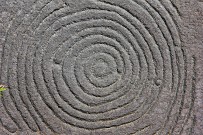 The archaeological find in the Caves of Belmaco (Mazo) had been the first of its kind on the Canary Islands.
The archaeological find in the Caves of Belmaco (Mazo) had been the first of its kind on the Canary Islands.

However, public interest in the native inhabitants of La Palma only awoke during the 1980s.
Meanwhile, hundreds of find-spots are known on La Palma.
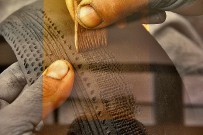
A large number of archaeological, historical, ethnographic and other researchers as well as a archaeoastronomic group tried to find out more about the mysterious heritage of the Benahoaritas (Guanches) and their lifestyle.
If you are up to immerse yourself in the heritage of the native inhabitants of La Palma, you find plenty of possibilities all around the island - we provide you with a brief overview:
Museo Arqueológico Benahoarita (MAB)
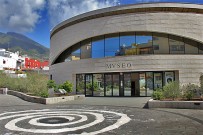 Detailed information about the life of the Benahoaritas is exhibited in the Museo Arqueológico Benahoarita (MAB) of Los Llanos de Aridane.
Detailed information about the life of the Benahoaritas is exhibited in the Museo Arqueológico Benahoarita (MAB) of Los Llanos de Aridane.
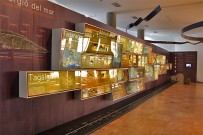
By use of wall papers, a video film, maps and finds the archaeological museum exposes the Spanish conquest.
The museum has a focus on geography, climatology as well as the diversity of the fauna and flora of the island during the times of the Palmerian native inhabitants.

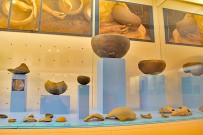 The territorial distribution of „benahoare“ (as La Palma is called in the ancient Canary language) with their settlements and proper names of the territories is vividly illustrated and so are the use of the natural resources and the adaption of the seasons, i.e. during the search of pasture area.
The territorial distribution of „benahoare“ (as La Palma is called in the ancient Canary language) with their settlements and proper names of the territories is vividly illustrated and so are the use of the natural resources and the adaption of the seasons, i.e. during the search of pasture area.
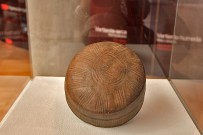
There is also another important cultural and magical-religious facet of this almost unknown folk.
In Los Llanos de Aridane a monument was erected in the honour of Tanausú, the last emperor of the Benahoaritas von La Palma.
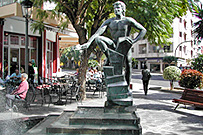
He was the last ruler of the Benahoare, who made a stand against the conquistadors in 1493, together with other native inhabitants.
Defeated by a perfidy he was taken as a prisoner on a Spanish ship to the Iberian Pensinsula, shouted „vacaguaré“ ("I want to die"), he refused to eat and died on the open sea.
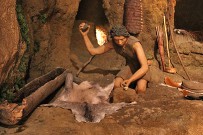
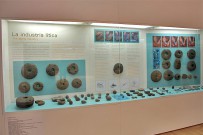
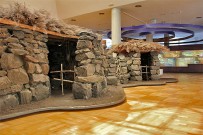
Mazo - the Cave of Belmaco
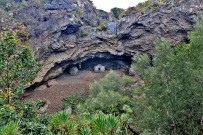 It is the place where during the 18th century the first rock engravings were discovered.
It is the place where during the 18th century the first rock engravings were discovered.
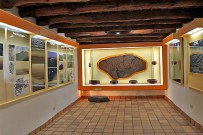
The lovingly groomed facility comprises 10 dugouts, accessible by hiking trails. Two exhibition rooms show specimen of the typical dark pottery, the stone- and bone industry and provides a lot of information in German, English and Spanish about the life of the Benahoaritas.
The Archaeological Park Belmaco of Mazo has turned into a research centre for a many scientists.
Mazo - „El Molino“
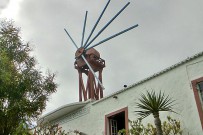
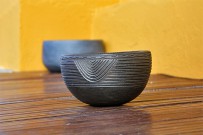 In the Ceramic workshop "El Molino" in Mazo an important part of the culture of the native inhabitants has been preserved.
In the Ceramic workshop "El Molino" in Mazo an important part of the culture of the native inhabitants has been preserved.
Since the 1970s Ramón Barreto Leal and Vina Cabrera craft replicas of lavish black ceramic pieces of the Benahoaritas, which are traditionally elaborated without a pottery wheel.
Fuencaliente - Roque Teneguía
Another find-spot of rock engravings of the native inhabitants of La Palma was found on the pale rock Roque Teneguía.
It rises up against the dark volcanic landscape on the southeren tip of La Palma (Fuencaliente).

Santa Cruz - Cueva de Carías

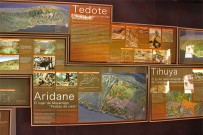 According to the chronicles from that cave prince Bentacaize ruled his kingdom Tedote.
According to the chronicles from that cave prince Bentacaize ruled his kingdom Tedote.
Following the Conquista, captain Alonso Fernández de Lugo converted the cave in Santa Cruz de La Palma into the first official residence of the new emperor.
San Andrés y Sauces - Cueva de Tendal
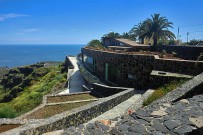
 It is one of the most important find-spots that gives some indication about the way of life of the Benahoaritas of La Palma.
It is one of the most important find-spots that gives some indication about the way of life of the Benahoaritas of La Palma.
There you find several dugouts and funeral caves. Products made of stone, bones and ceramic were crafted there. An inherent archaeological park is planned to be opened in 2016.
At La Mata (Garafía) - Parque Arqueológico La Zarza y La Zarcita
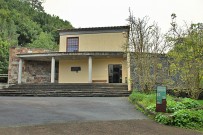
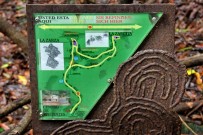 From the visitor's centre a circular route guides you through the bewitched landscape to the remarkable rock engravings of the thorn bush spring.
From the visitor's centre a circular route guides you through the bewitched landscape to the remarkable rock engravings of the thorn bush spring.
The petroglyphs of La Zarza (Garafía) have been known since 1949, however investigations started only in the 1970s.
Santo Domingo - Grabados rupestres
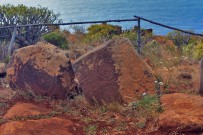
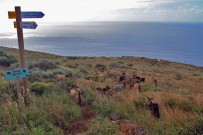 The surrounding area of the cemetary of Santo Domingo (Garafía) is worth a walk to admire stones decorated with petroglyphs in the midst of the beautiful coastal landscape.
The surrounding area of the cemetary of Santo Domingo (Garafía) is worth a walk to admire stones decorated with petroglyphs in the midst of the beautiful coastal landscape.
Santo Domingo - Ayuntamiento
In the inner courtyard of the town hall of the municipality of Garafía you find many specimen of artistic stone engravings from the ancient Palmerian inhabitants.
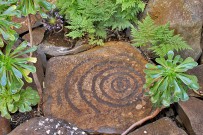
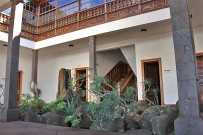
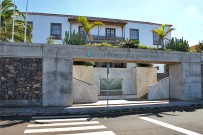
Las Tricias / Buracas - architectonic-ethnographic ensemble
In midst of the marvellous landscape of Las Tricias there is another pre-Hispanic settlement.
In the lower part of the canyon Barranco del Corchete you find dugouts and rock engravings. The well signed path with its terrific dragon trees is one of the most popular one of the Isla Bonita.
The caves were used for living, storage rooms or stables.
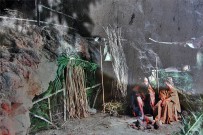
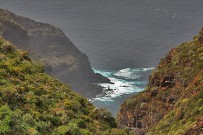
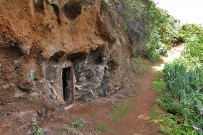
El Paso - Petroglyphs „Lomo de La Fajana”
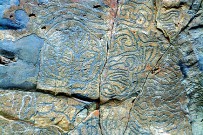 The prehistoric rock engravings are found in the rural area of El Paso.
The prehistoric rock engravings are found in the rural area of El Paso.
They show exceptional motives like engravings in the form of a sun. This place ranks as a sanctuary of the Benahoaritas.
Not far from there (about 15 - 20 walking minutes) there is the find-spot „El Verde“ („El Cementerio“).
El Paso - Petroglyphen „El Verde” („El Cementerio”)
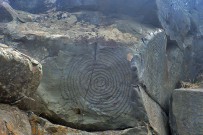 Following the small valley below the Lomo de La Fajana to the semi-circular valley slope you reach the find-spot „El Verde“ or also called „Cementerio“ (Spanish cementary).
Following the small valley below the Lomo de La Fajana to the semi-circular valley slope you reach the find-spot „El Verde“ or also called „Cementerio“ (Spanish cementary).
The towering rock face hides three caves and also shows the largest spiral discovered on La Palma.
El Paso - Roque Idafe / Caldera de Taburiente
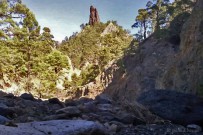
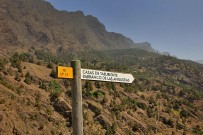 In the heart of the Parque Nacional de La Caldera de Taburiente (National Park) you find an extraordinary rock.
In the heart of the Parque Nacional de La Caldera de Taburiente (National Park) you find an extraordinary rock.
The „Roque Idafe“ became sacred to the Benahoaritas, where animals were sacrificed as the rock was considered to keep up the sky.
Whenever you follow the footprints of the native inhabitants please show respect and caution.
Unfortunately, some rock engravings were painted over with modern graffito and smaller finds have been taken away. Preserving the heritage of the Benahoaritas should be a matter of concern to all of us.
photos: Ines Dietrich, Uka Rösch and La Palma Bacan, images in MAB by courtesy of Cabildo isular.



Ich bin froh, dass man die Bedeutung der Urbevölkerung wieder entdeckt. Sie waren friedlich und stellten die Frau und Mutter ins Zentrum ihrer Kultur. Die Quelle war Synonym für die weibliche Schöpferkraft. Mit ihrer Verehrung heiligte man den Ursprung des Lebens und das Leben selbst. Die Spirale ist ein magisches Zeichen für diese Verehrung. Ich bin Autor des Buches Die Weisheit der Mütter, Verlag Neue Erde.